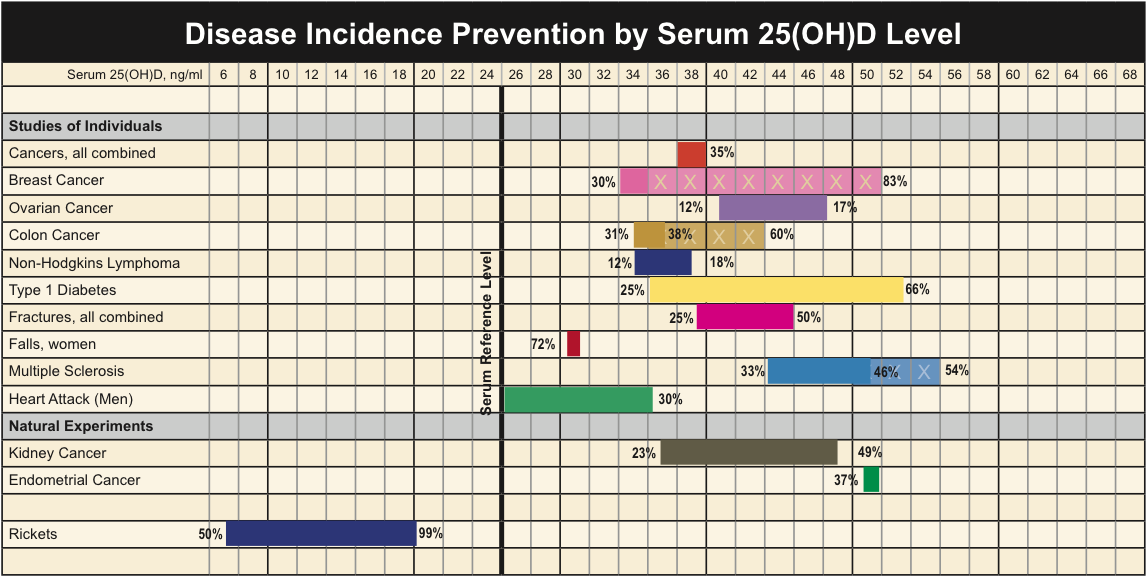"The following paper provides an equation on how to calculate what dose of vD level is needed to raise vD levels. Interesting the average dose required was 4707IU/day, not far from 5,000IU/day recommended by the Vitamin D Council. Is this a conincidence? What is clear that the current RDA that was derived from studies on cod liver oil supplementation for the prevention of rickets is far too low."
Singh G, Bonham AJ. A predictive equation to guide vitamin d replacement dose in patients. J Am Board Fam Med. 2014 Jul-Aug;27(4):495-509.
BACKGROUND: Vitamin D is essential for bone health and probably the health of most non-skeletal tissues. Vitamin D deficiency is widespread, and recommended doses are usually inadequate to maintain healthy levels. We conducted a retrospective observational study to determine whether the recommended doses of vitamin D are adequate to correct deficiency and maintain normal levels in a population seeking health care. We also sought to develop a predictive equation for replacement doses of vitamin D.
METHODS: We reviewed the response to vitamin D supplementation in 1327 patients and 3885 episodes of vitamin D replacement and attempted to discern factors affecting the response to vitamin D replacement by conducting multiple regression analyses.
RESULTS: For the whole population, average daily dose resulting in any increase in serum 25-hydroxyvitamin D level was 4707 IU/day; corresponding values for ambulatory and nursing home patients were 4229 and 6103 IU/day, respectively. Significant factors affecting the change in serum concentrations of 25-hydroxyvitamin D, in addition to the dose administered, are (1) starting serum concentration of 25-hydroxyvitamin D, (2) body mass index (BMI), (3) age, and (f) serum albumin concentration. The following equation predicts the dose of vitamin D needed (in international units per day) to affect a given change in serum concentrations of 25-hydroxyvitamin D: Dose = [(8.52 - Desired change in serum 25-hydroxyvitamin D level) + (0.074 × Age) - (0.20 × BMI) + (1.74 × Albumin concentration) - (0.62 × Starting serum 25-hydroxyvitamin D concentration)]/(-0.002). Analysis of thedose responses among 3 racial groups-white, black, and others-did not reveal clinically meaningful differences between the races. The main limitation of the study is its retrospective observational nature; however, that is also its strength in that we assessed the circumstances seen in usual health care setting.
CONCLUSIONS: The recommended daily allowance for vitamin D is grossly inadequate for correcting low serum concentrations of 25-hydroxyvitamin Din many adult patients. About 5000 IU vitamin D3/day is usually needed to correct deficiency, and the maintenance dose should be ≥2000 IU/day. The required dose may be calculated from the predictive equations specific for ambulatory and nursing home patients.
